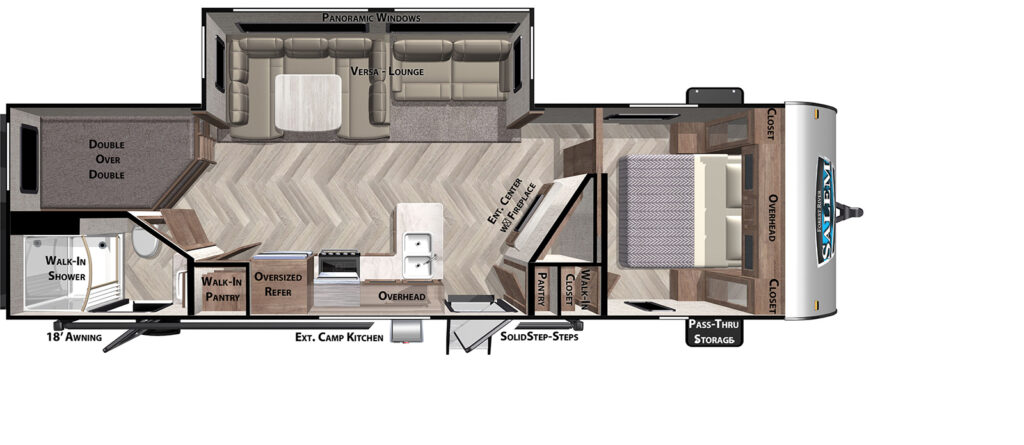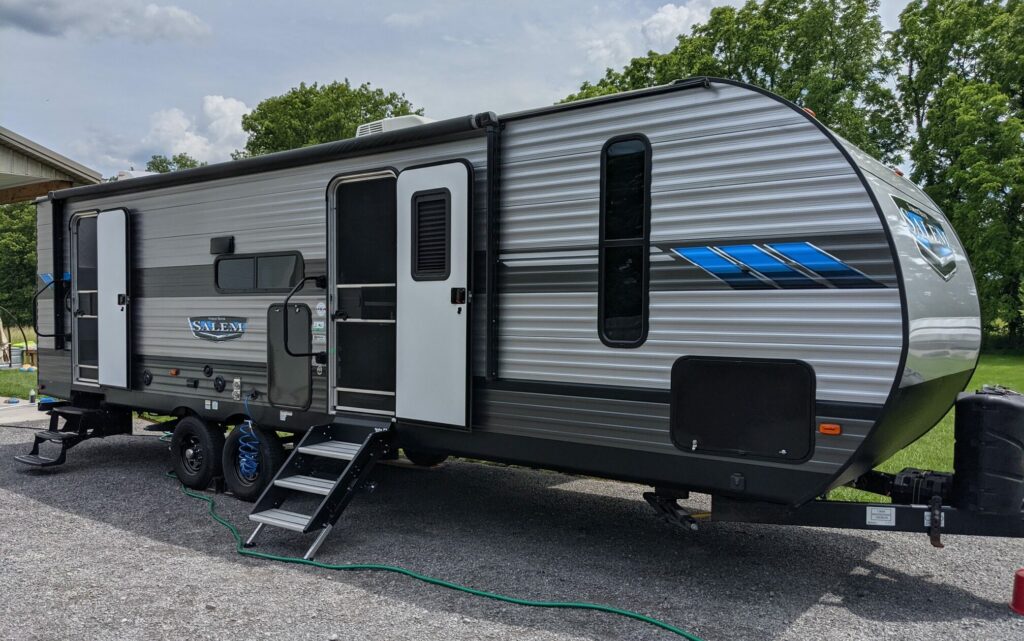After two Coleman popups (2000 Bayside Elite, 1999 Utah) we ordered a 2020 Forest River Salem 26DBUD in October of 2019. It was delivered in January of 2020. We wanted a bunk house floor-plan that would fit our family but not be too crazy long. We visited the Hersey RV show in 2019 and walked a dizzying amount of floor-plans in two days. The moment my wife walked into the 26DBUD (Wildwood/Salem) she said it was the one. The underlying specs were great too and the price was right also.
The important specs:
- Total length, ball to bumper – 33′ 2″
- Height – 11′ 2″
- Width – 96″
- Fresh Water – 40gal, Sinks Gray – 30gal, Shower Gray – 30gal, Black – 30gal
- Awning – 18′
- Cargo Carrying Capacity (per door sticker) – 2693lb
- GVWR – 9595lb
- GAWR – 2x 4400lb
I liked that the trailer had a good buffer between the dry capacity and max capacity. 2,700lbs of cargo carrying is very high for a travel trailer. The frame is a 8″ i-beam vs 6″ that seems common for the class. The axles are 4400lb each vs 3500lb which also seems more common for similar size trailers. A large awning with no slides on the camp side was also preferred. The tank capacities are decent. I wish the fresh was larger. The high cargo capacity is important as you add solar panels, inverters, battery banks, and components. I am going to leverage the dead space behind the tv/fireplace to house the solar components. The battery bank will be placed at the bottom of the bedroom closet. This will have almost no impact on available storage space and keep everything nicely out of sight.
The build quality of most RVs are poor across the board, both expensive and inexpensive units. I am a proponent of not paying for fancy features up front and instead adding the features you actually want after the sale. RV components are very standard across brands and price so changing and swapping parts is relatively easy. If you did not know we modified many things in our RV you would assume it came from the factory that way.

